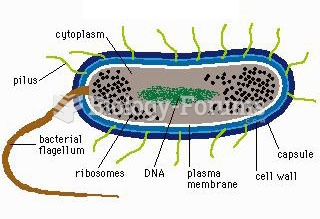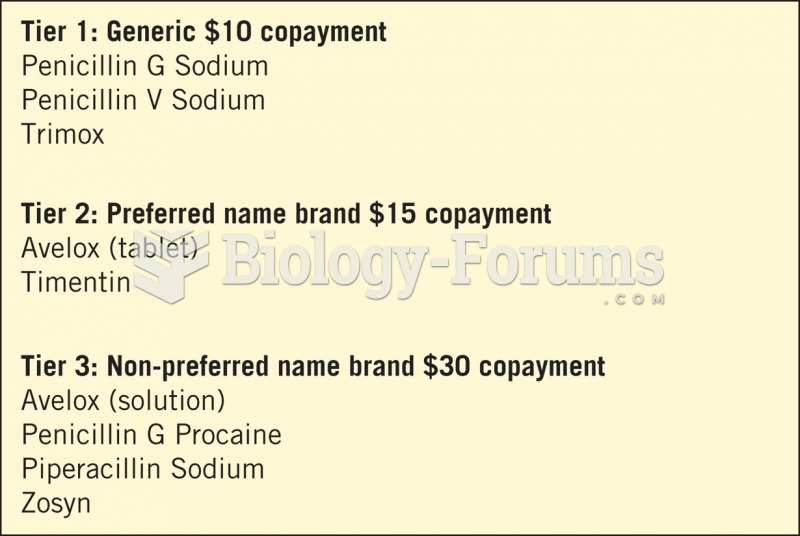Answer to Question 1
Correct Answer: 1, 2
Rationale 1: The longer an antibiotic is used in the population and the more often it is prescribed, the higher will be the percentage of resistant strains
Rationale 2: Prematurely stopping antibiotic therapy allows some pathogens to survive, thus promoting the development of resistant strains.
Rationale 3: These mutations occur spontaneously and randomly in the bacterial cell. Although most mutations are harmful to the organism, mutations occasionally result in a bacterial cell that has reproductive advantages over its neighbors. The mutated bacterium might be able to survive in harsher conditions or perhaps grow faster than surrounding cells. One such mutation of particular importance to medicine is that which confers drug resistance on a microorganism.
Rationale 4: Frequent handwashing by health care providers encourages the spread of bacteria to many clients receiving antibiotics in the hospital is incorrect because frequent handwashing helps to prevent the spread of bacteria.
Rationale 5: Resistance to medication occurs quite frequently.
Global Rationale: The longer an antibiotic is used in the population and the more often it is prescribed, the higher will be the percentage of resistant strains Prematurely stopping antibiotic therapy allows some pathogens to survive, thus promoting the development of resistant strains. These mutations occur spontaneously and randomly in the bacterial cell. Although most mutations are harmful to the organism, mutations occasionally result in a bacterial cell that has reproductive advantages over its neighbors. The mutated bacterium might be able to survive in harsher conditions or perhaps grow faster than surrounding cells. One such mutation of particular importance to medicine is that which confers drug resistance on a microorganism. Frequent handwashing by health care providers encourages the spread of bacteria to many clients receiving antibiotics in the hospital is incorrect because frequent handwashing helps to prevent the spread of bacteria. Resistance to medication occurs quite frequently. This statement is false.
Answer to Question 2
Correct Answer: 3
Rationale 1: Bacteriocidal medications kill bacteria and bacteriostatic medications slow the growth of bacteria.
Rationale 2: Bacteriocidal medications kill bacteria and bacteriostatic medications slow the growth of bacteria.
Rationale 3: Bacteriocidal medications kill bacteria and bacteriostatic medications slow the growth of bacteria.
Rationale 4: Bacteriocidal medications kill bacteria and bacteriostatic medications slow the growth of bacteria.
Global Rationale: Bacteriocidal medications kill bacteria and bacteriostatic medications slow the growth of bacteria. The terms do not have the same meaning, bacteriostatic medication do not need to be given first.







